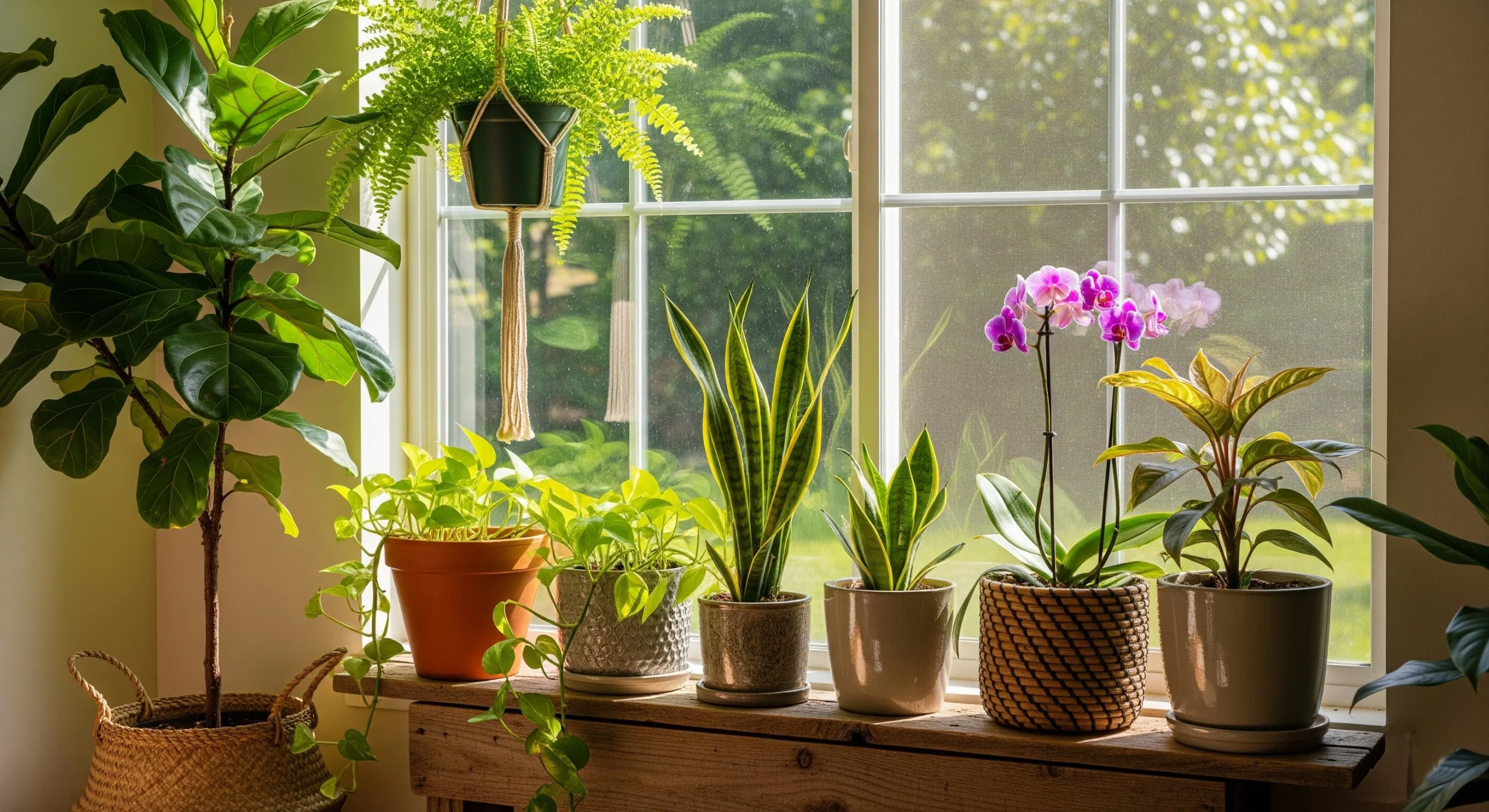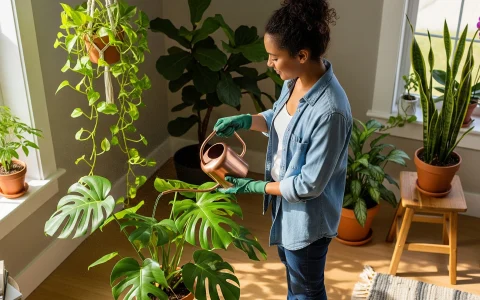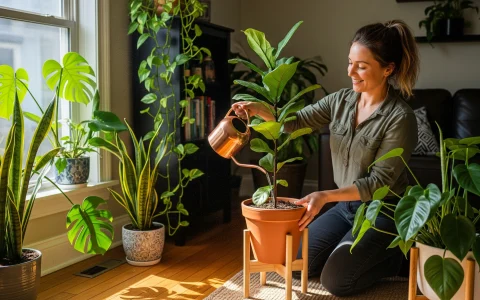How to Keep Indoor Plants Healthy, Thriving, and Beautiful

Indoor plants not only beautify your home but also provide a calming atmosphere and improve air quality. However, many people struggle to keep their plants healthy and thriving—especially in environments with limited sunlight or dry indoor air. This comprehensive guide will show you how to keep indoor plants healthy naturally, covering everything from watering and lighting to fertilizing and pest management.
Why Healthy Indoor Plants Matter
- They filter indoor air and remove pollutants
- They reduce stress and improve mood
- They enhance your home’s interior design
- They support mental well-being through horticultural therapy
Unhealthy plants not only look dull but can also spread diseases to other plants nearby, making proper care essential.
Providing the Right Light for Indoor Plants
Types of Light
- Direct sunlight: Ideal for cacti and succulents
- Indirect sunlight: Perfect for monstera, aglaonema, and peace lily
- Low light: Suitable for snake plants, ZZ plants, and ferns
Placement Tips
- Place plants near east- or west-facing windows
- Use sheer curtains to filter harsh light
- Rotate pots weekly to ensure even growth
Proper Watering Techniques
Common Mistakes
- Overwatering, leading to root rot
- Underwatering, causing wilting
Watering Guidelines
| Plant Type | Frequency |
|---|---|
| Succulents | Once every 7–10 days |
| Monstera | Once every 3–4 days |
| Snake Plant | Once every 10–14 days |
Check the top 2–3 cm of soil with your finger. If it’s dry, it’s time to water.
Using Natural Fertilizers
Organic Fertilizer Options
- Rice water – boosts leafy growth
- Banana peel – rich in potassium and phosphorus
- Coffee grounds – improves soil nutrition
- Onion peel water – prevents fungal growth and strengthens roots
Use fertilizers 1–2 times per month to avoid mineral buildup.
Dealing with Pests and Diseases
| Symptom | Possible Issue | Natural Solution |
|---|---|---|
| Yellow leaves | Root rot from overwatering | Replace soil and reduce watering |
| White powder spots | Powdery mildew | Spray diluted apple cider vinegar |
| Holes in leaves | Caterpillars or aphids | Spray garlic water |
| Leaf drop | Lack of light | Move to a brighter spot |
A mix of mild soap water and neem oil is also an effective natural pesticide.
Choosing the Right Soil and Pot
Recommended Potting Mix
- Soil + burnt rice husk + compost
- Add sand for succulents
- Use charcoal pieces for tropical plants
Pot Selection Tips
- Drainage holes are essential
- Clay pots absorb excess moisture
- Choose the right size to avoid root rot
Ventilation and Humidity Control
- Open windows in the morning for fresh air
- Mist leaves every two days
- Use a humidifier in dry climates
Pruning and Repotting
Pruning
- Use sterilized scissors
- Remove dead or dry leaves
- Encourages nutrients to focus on healthy growth
Repotting
- Best done every 1–2 years
- Change pots when roots grow out from the bottom
- Helps refresh soil and improve plant health
Specific Tips for Popular Plants
| Plant | Special Care Tips |
|---|---|
| Monstera | Likes bright, indirect light; water when soil is almost dry |
| Snake Plant | Water sparingly; very drought-tolerant |
| Pothos | Easy to grow; perfect for beginners |
| Calathea | Needs high humidity and regular misting |
| Aglaonema | Tolerates low light; water moderately |
Frequently Asked Questions (FAQ)
Q: How do I know if I’m overwatering my plant?
A: Check for yellow, mushy leaves and overly damp soil.
Q: Do I need chemical fertilizers?
A: Not necessarily. Regular organic feeding is enough for most plants.
Q: What’s the safest way to treat mealybugs?
A: Spray with mild soap water mixed with a few drops of neem oil.
Q: Which plants are best for beginners?
A: Snake plant, pothos, and ZZ plant are hardy and easy to maintain.
Conclusion
Maintaining healthy indoor plants is rewarding and easier than you think. With regular watering, proper lighting, organic fertilizing, and occasional pruning, your plants will thrive all year round. Healthy plants make for a happy home. 🌿


